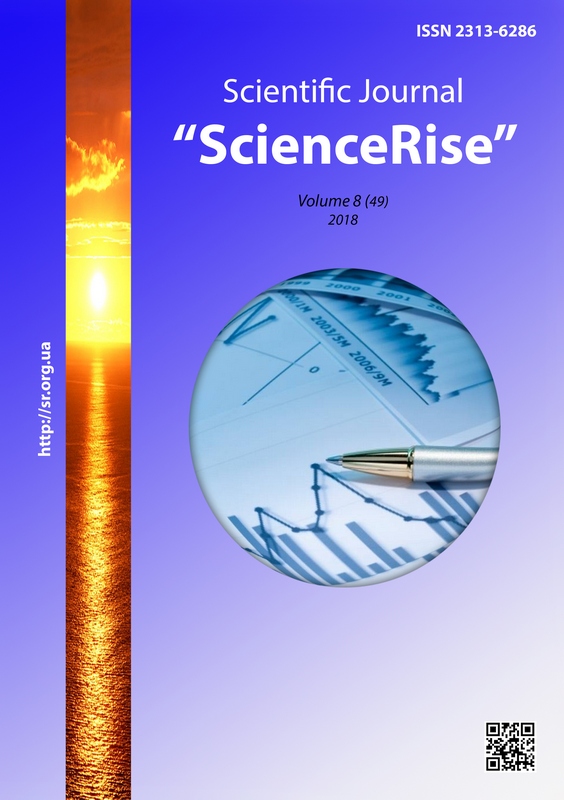Development of energy efficient drying regime of starch-containing raw material
DOI:
https://doi.org/10.15587/2313-8416.2018.141156Keywords:
sweet potato roots, heat and moisture treatment, step drying, chips, food powder, energy-efficient regimesAbstract
The article gives the classification of plant materials, focuses on starch-containing raw materials, in particular, sweet potato roots, chemical composition, existing drying methods. The results of studies of heat-water treatment and the process of convective dehydration of root crops are presented. Energy-efficient two-stage drying modes have been developed, in which the coolant temperature in the first stage of the process is 80 ... 100 °С, in the second – 55 ... 70 °С, the material temperature during dewatering 50 ... 60 °С. reduction of drying time, reduction of heat losses to 15 %, production of dried products with high organoleptic characteristics
References
Sniezhkin, Yu. F., Shapar, R. O. (2012). Tekhnolohichni aspekty vyrobnytstva sushenykh produktiv [Technological aspects of the production of dried products]. Udoskonalennia protsesiv i obladnannia-zaporuka innovatsiinoho rozvytku kharchovoi promyslovosti [Improvement of processes and equipment, the key to the innovative development of the food industry]. Kyiv: NUKHT, 102–104.
Food and Agriculture Organization of the United Nations. Available at: http://www.fao.org/home/en/ Last accessed: 15.05.2018
Nirmal, K. S. (Ed.) (2011). Handbook of Vegetables and Vegetable Processing. Wiley-Blackwell, A John Wiley & Sons, Ltd., Publication, 772. doi: http://doi.org/10.1002/9780470958346
Bovell-Benjamin, A. C. (2007). Sweet Potato: A review of its past, present, and future role in human nutrition. Advances in Food Nutrition Research, 52 (1), 1–59. doi: http://doi.org/10.1016/s1043-4526(06)52001-7
Joykumar Singh, N., Pandey, R. K. (2012). Convective air drying characteristics of sweet potato cube (Ipomoea batatas L.). Food and Bioproducts Processing, 90 (2), 317–322. doi: http://doi.org/10.1016/j.fbp.2011.06.006
Zhong, T. (2003). The effect of ohmic heating on vacuum drying rate of sweet potato tissue. Bioresource Technology, 87 (3), 215–220. doi: http://doi.org/10.1016/s0960-8524(02)00253-5
Silayo, V., Laswai, H., Mkuchu, J., Mpagalile, J. (2003). Effect of Sun-Drying on Some Quality Characteristics of Sweet Potato Chips. African Journal of Food, Agriculture, Nutrition and Development, 3 (2). doi: http://doi.org/10.4314/ajfand.v3i2.19143
Okungbowa, F. I., Osagie, M. (2009). Mycoflor of sun-dried sweetpotato (Ipomoea batatas L.) slices in Benn City, Nigeria. Nigeria. African Journal of Biotechnology, 8 (14), 3326–3331. Available at: https://www.ajol.info/index.php/ajb/article/view/61090/49282 Last accessed: 30.05.2018
Dzantieva, L. B., Hurumova, Z. K., Hoziev, A. M. (2017). Pat. No. 0002631393. Method for the production of food spiraling chips from sweet potato tubers [Sposob proizvodstva pischevyih spiralevidnyih chipsov iz klubney batata]. No. 2017100171; declareted: 09.01.2017; published: 21.09.2017. Bul. No. 27.
Li, M., Jiang, J. (2017). Pat. No. 106901277 China. Method for producing health sweet potato chips. No. 102017000296117; declareted: 28.04.2017; published: 30.06.2017.
Volchkova, N. T., Ionova, A. M., Kabanov, V. T. et. al. (1984). Proizvodstvo produktov pitaniya iz kartofelya [Manufacture of food products from potatoes]. Moscow: Light and Food Industry, 192.
Aliyeva, N. F. (2011). The identification of the activity of peroxidase in apples and potatoes under normal and saline conditions. The World of Medicine and Biology, 31 (4), 65–67. Available at: https://womab.com.ua/ua/smb-2011-04/122 Last accessed: 07.06.2018
Downloads
Published
Issue
Section
License
Copyright (c) 2018 Raisa Shapar, Olena Husarova

This work is licensed under a Creative Commons Attribution 4.0 International License.
Our journal abides by the Creative Commons CC BY copyright rights and permissions for open access journals.
Authors, who are published in this journal, agree to the following conditions:
1. The authors reserve the right to authorship of the work and pass the first publication right of this work to the journal under the terms of a Creative Commons CC BY, which allows others to freely distribute the published research with the obligatory reference to the authors of the original work and the first publication of the work in this journal.
2. The authors have the right to conclude separate supplement agreements that relate to non-exclusive work distribution in the form in which it has been published by the journal (for example, to upload the work to the online storage of the journal or publish it as part of a monograph), provided that the reference to the first publication of the work in this journal is included.

